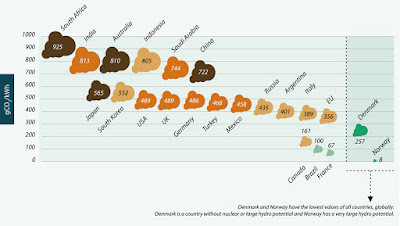 |
| Homes and farmland at The Cannery. |
The development covers 7.4 acres, of which the farm is 5.5 acres, including 4 acres of farmland with organic vegetables, poultry and orchard fruit.
 |
| Apartments at The Cannery. |
Called The Cannery, it is an innovative mixed-use community with 583 residences on the site of a former tomato cannery in Davis, on the outskirts of Sacramento near San Francisco. Retail shops, a recreation centre, outdoor amphitheatres and miles of trails are also included in the plan.
 |
| Plan of The Cannery, on the outskirts of Sacramento near San Francisco |
 |
| Housing and cycle track at The Cannery. |
The first crop from the urban farm is being harvested this month, sold through a farm shop that is open twice a week. Mary Kimball, the executive director of the Centre for Land-Based Learning, the organisation managing the urban farm, says, "We have three beginning farmers, all graduates of the California Farm Academy, who have started new farming businesses and are now providing the residents of the town very local produce."
 |
| Urban farmers market at The Cannery. |
“To see The Cannery today becoming a viable farm community is not only personally exciting for me, but also one of the most fulfilling accomplishments in my career,” said Craig McNamara, founder of the Center for Land-Based Learning (CLBL). “The Cannery Urban Farm honours what I believe in most: connecting eaters directly to food.”
Training
The project includes a teaching academy for sustainable farming. The Centre launched the California Farm Academy five years ago to help those wanting to break into a career in agriculture.“These first farm harvests at The Cannery signify about 6 ½ years of meetings, discussions, flexibility and creativity,” said Kimball. “From the earliest planning stages, there was active collaboration between the builder (The New Home Company), the City of Davis and the CLBL. It’s been a good example of public-private-non-profit partnership.”
There are several “agrihoods” around the nation, such as Agritopia in Phoenix and Serenbe in Atlanta, she says, but they tend to have different arrangements with the farmers. “As far as we can tell, The Cannery is the nation’s first farm-to-table housing development focused on beginning farmers.”
The Academy offers a full range of training and internship opportunities, focussing not just on growing but on conservation and included among the topics are access to land and equipment, the most expensive barriers to starting a farming business.
"The cost of land is really expensive," says Hope Sippola, one of the farmers. "The only way to make it affordable is to lease land through the centre."
This is one example of how the Centre partners with public and private landowners to provide low-cost lease opportunities. Weekly vegetable subscriptions via veggie boxes – Community Supported Agriculture – are being offered.
Recognition
 |
| Large house with garden and farmland at The Cannery. |
“We have worked extremely hard over the past several years to get to this moment,” said Kevin Carson, Northern California President for New Home. “The Cannery is unlike any other community in the western United States and it has truly been a rewarding experience to contribute to such an innovative concept." He was also elected to the Hall of Fame at the Gold Nugget Awards.
The New Home team also shared the Residential Community of the year honour with design consultants who helped shape the vision for The Cannery.
The site also reduces reliance on cars by supporting bicycles and walking, limits energy consumption with highly energy efficient buildings, and features renewable energy production: a 1.5 kV photovoltaic solar system and electric vehicle charging come with every home. Residents can also upgrade to net zero living.
Parks and paths connect neighbours everywhere they turn.
The builders
The homes themselves are built by Shea Homes, a large West Coast developer founded in 1881. The New Home Company developed the Urban Farm’s infrastructure, including a new agricultural well and conveyance system on the farm. The orchard land and infrastructure are being donated to the City of Davis, which is leasing it inexpensively to CLBL.The Urban Farm is managed by CLBL, which is leasing the farmland to three graduates of its California Farm Academy Program. CLBL’s training program and farm business incubator teaches and mentors new farmers in agricultural production, business planning and marketing.
CLBL is partnering with University of California Division of Agriculture and Natural Resources (UCANR) to develop community services and educational programs.
Urban farming in America
Sacramento Region has had a push in recent years to establish itself as America’s Farm-to-Fork Capital.In August, Sacramento's Elk Grove City Council expressed unanimous support for a plan to introduce urban, commercial farming within non-agriculturally zoned areas in the city. “Urban farming” is described in a city report as “a type of urban agriculture that entails the production of produce that is grown in an urban environment, and primarily for sale or consumed by someone other than the grower.”
If the idea becomes a reality in Elk Grove, similar farms could be operated on currently vacant, unimproved, or otherwise underdeveloped parcels in the city. They can be for-profit, non-profit, and/or social enterprises. Their products can be sold at such places as on-site stands, farmers’ markets, grocery stores and restaurants. These farms can also contribute to food banks.
Urban farms are already located in many American cities, including Chicago, Baltimore, New York City, San Francisco, Los Angeles, Sacramento and West Sacramento. They are typically found on properties ranging in size from one acre to three acres.
Cities need to do much more to feed themselves and reduce the environmental impact of farming, including food miles. Planning new communities around urban farms also reconnects city dwellers to nature, and the process of growing food, for which all too often they are distant and alienated.
David Thorpe is the author of:
- Best Practices and Case Studies for Industrial Energy Efficiency Improvement (with Oung, K. and Fawkes, S. UNEP, 2016)
- A London Conversation: Business Briefing on Green Bonds (The Fifth Estate, 2015)
- The One Planet Life (Introduction: Jane Davidson. Routledge, 2015)
- Earthscan Expert Guide to Energy Management in Buildings (Earthscan, 2013)
- Earthscan Expert Guide to Energy Management in Industry (Earthscan, 2013)
- Earthscan Expert Guide to Solar Technology (Earthscan, 2011)
- Earthscan Expert Guide to Sustainable Home Refurbishment (Earthscan, 2010)







